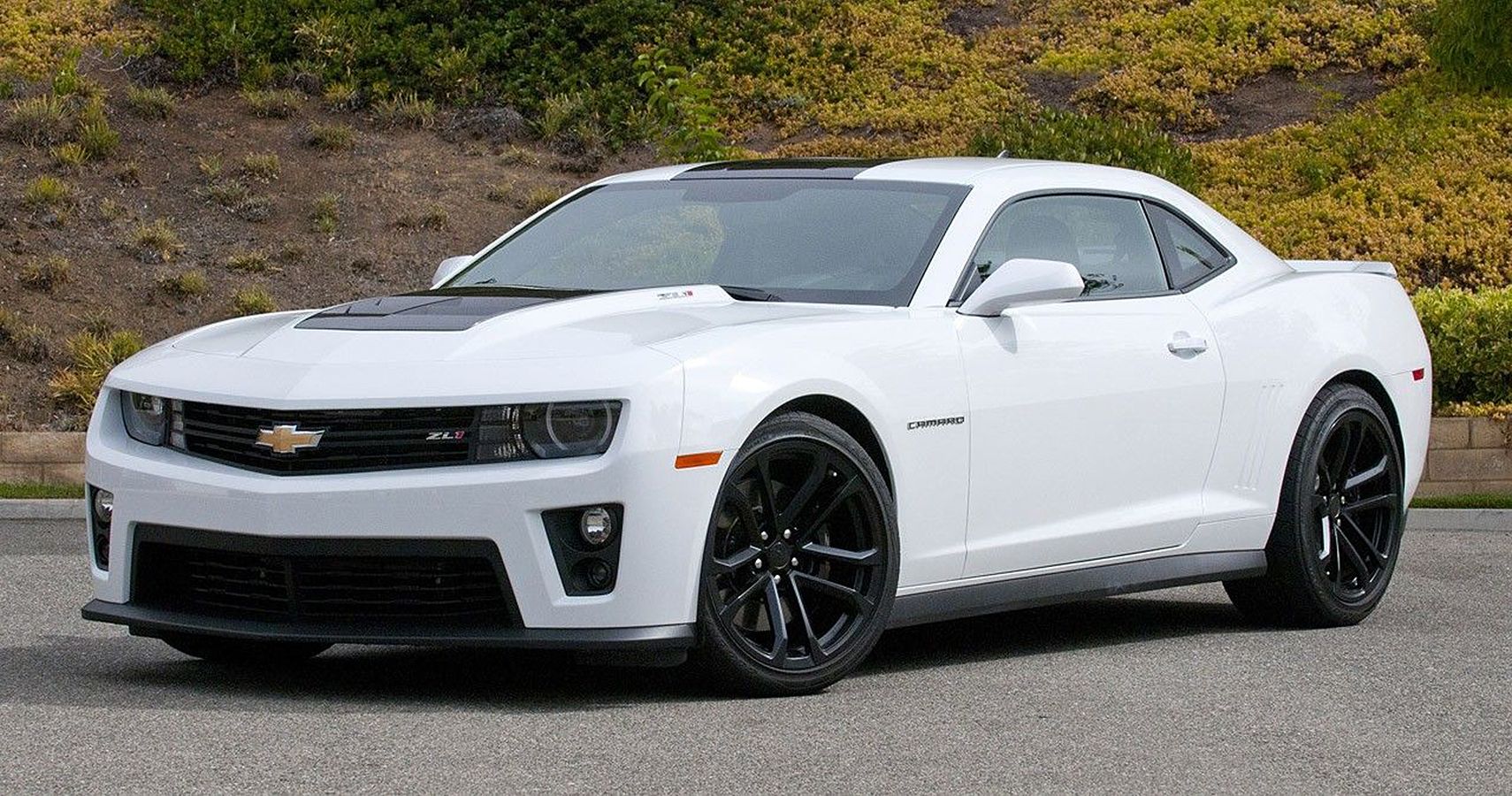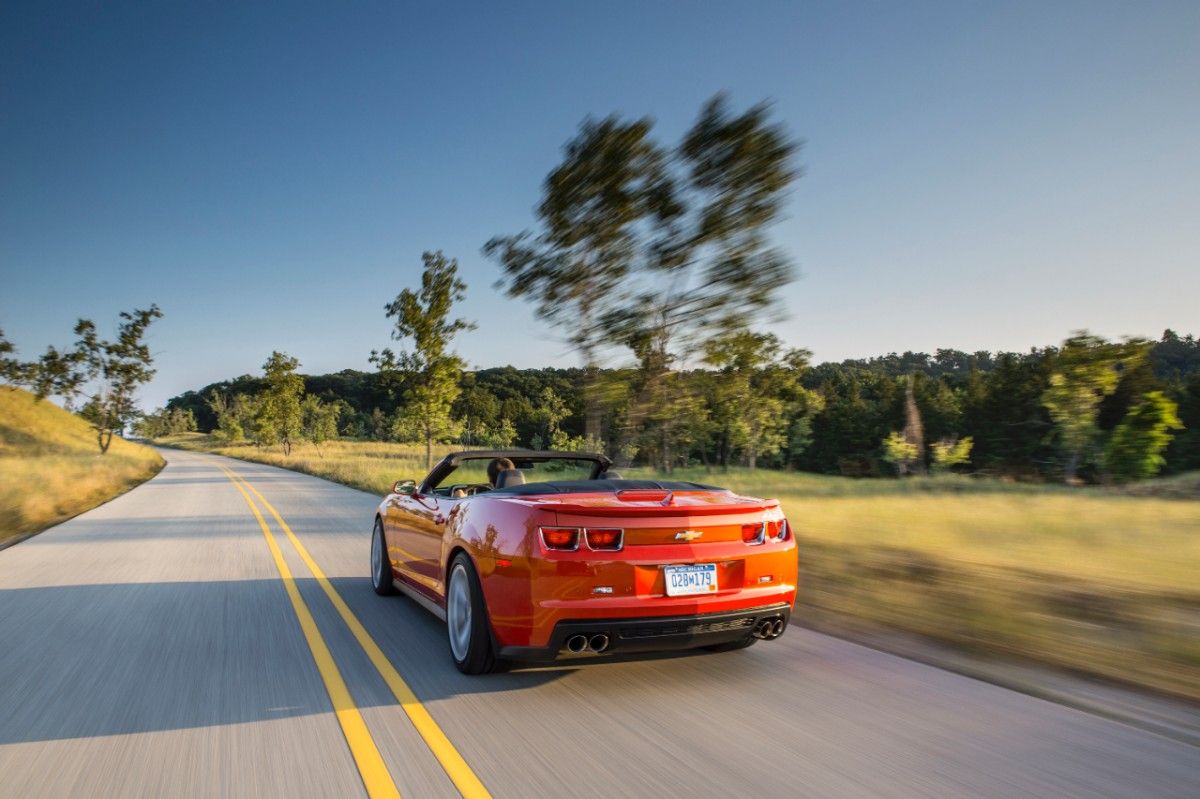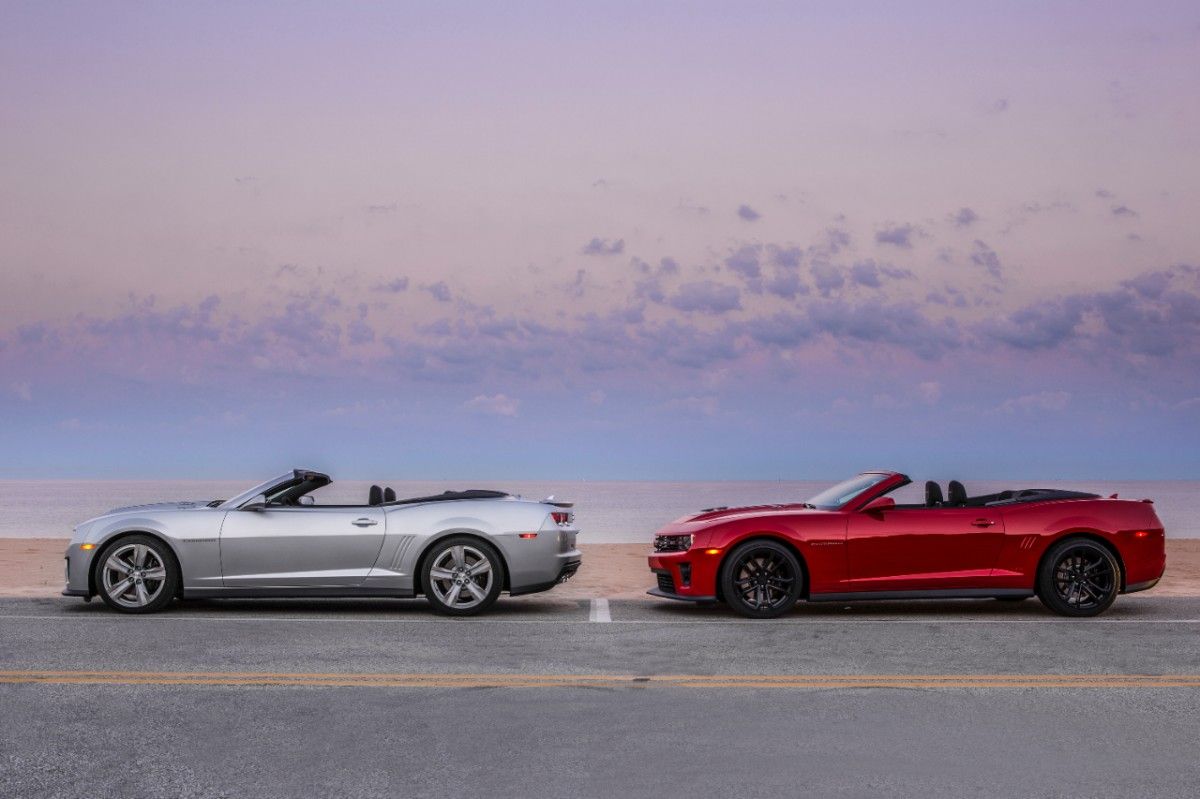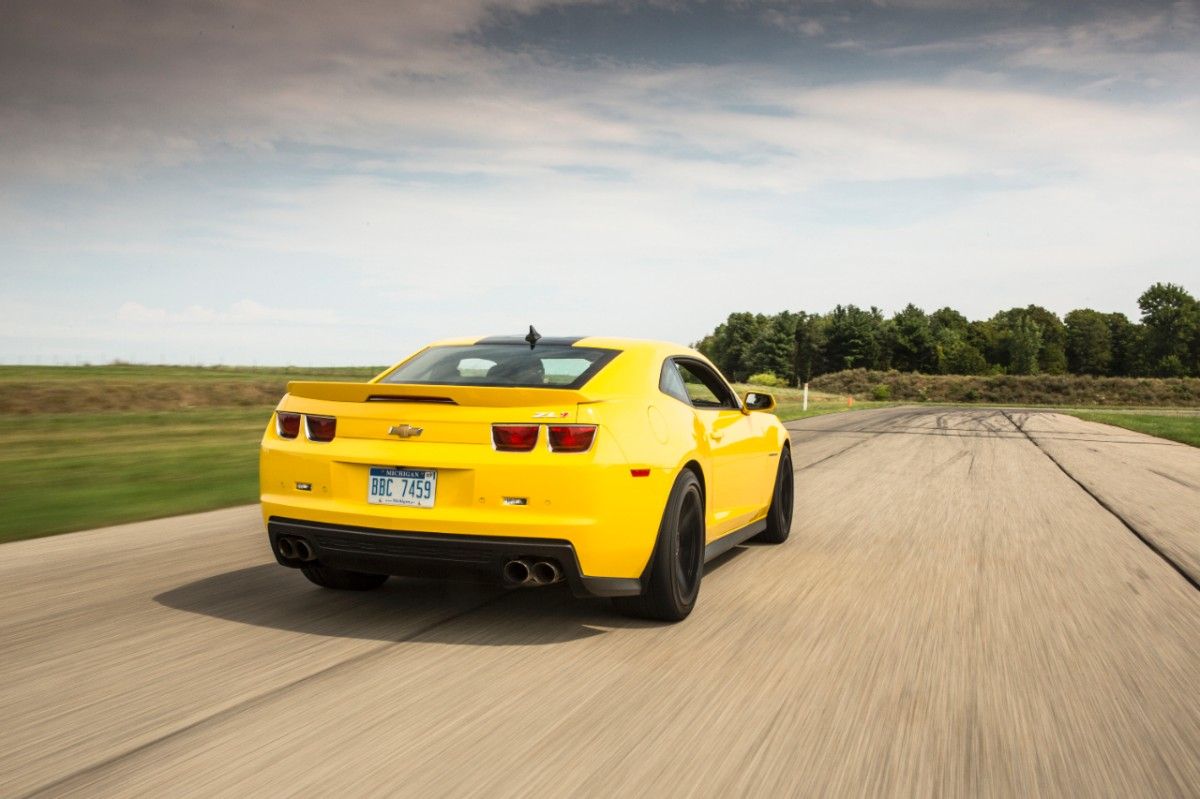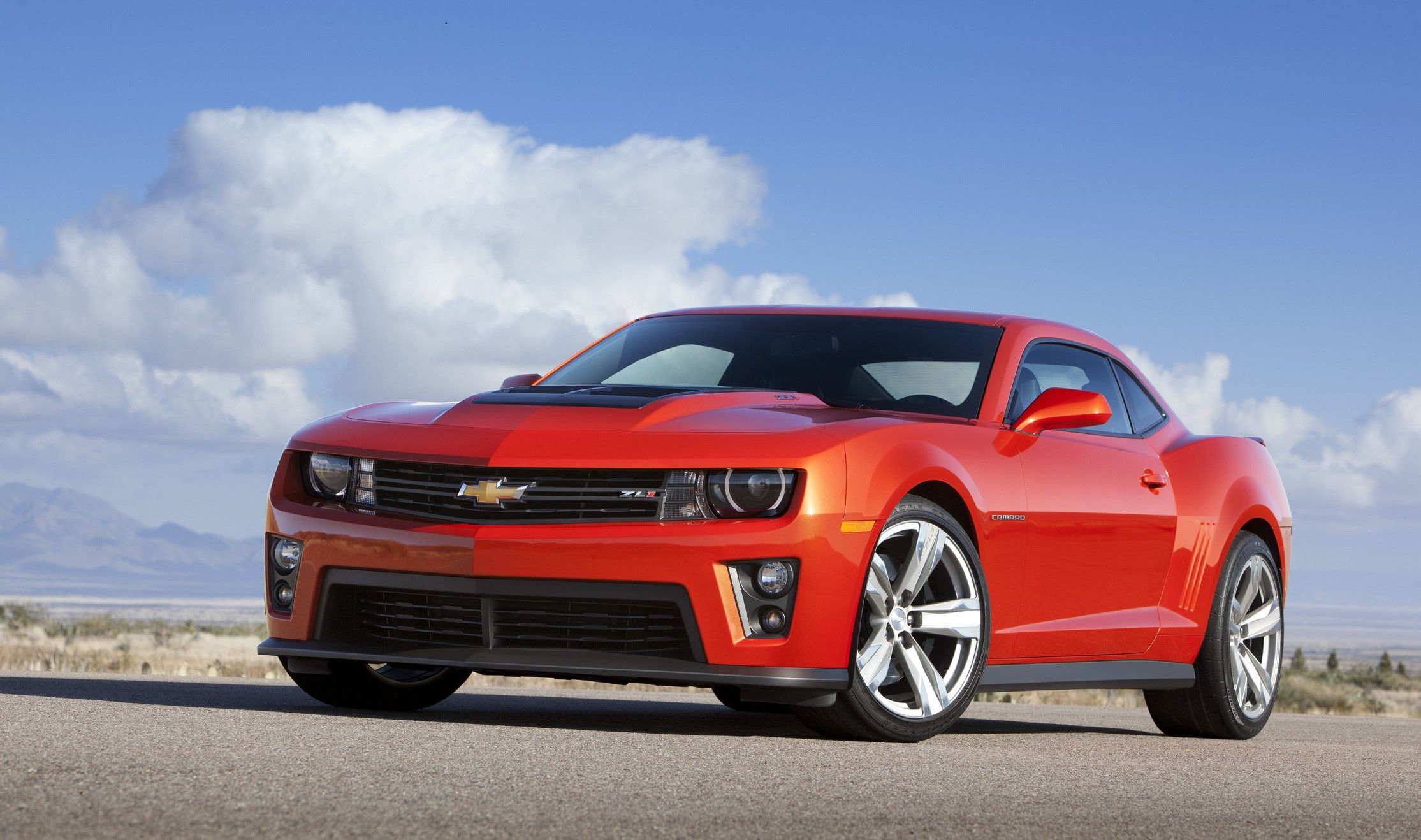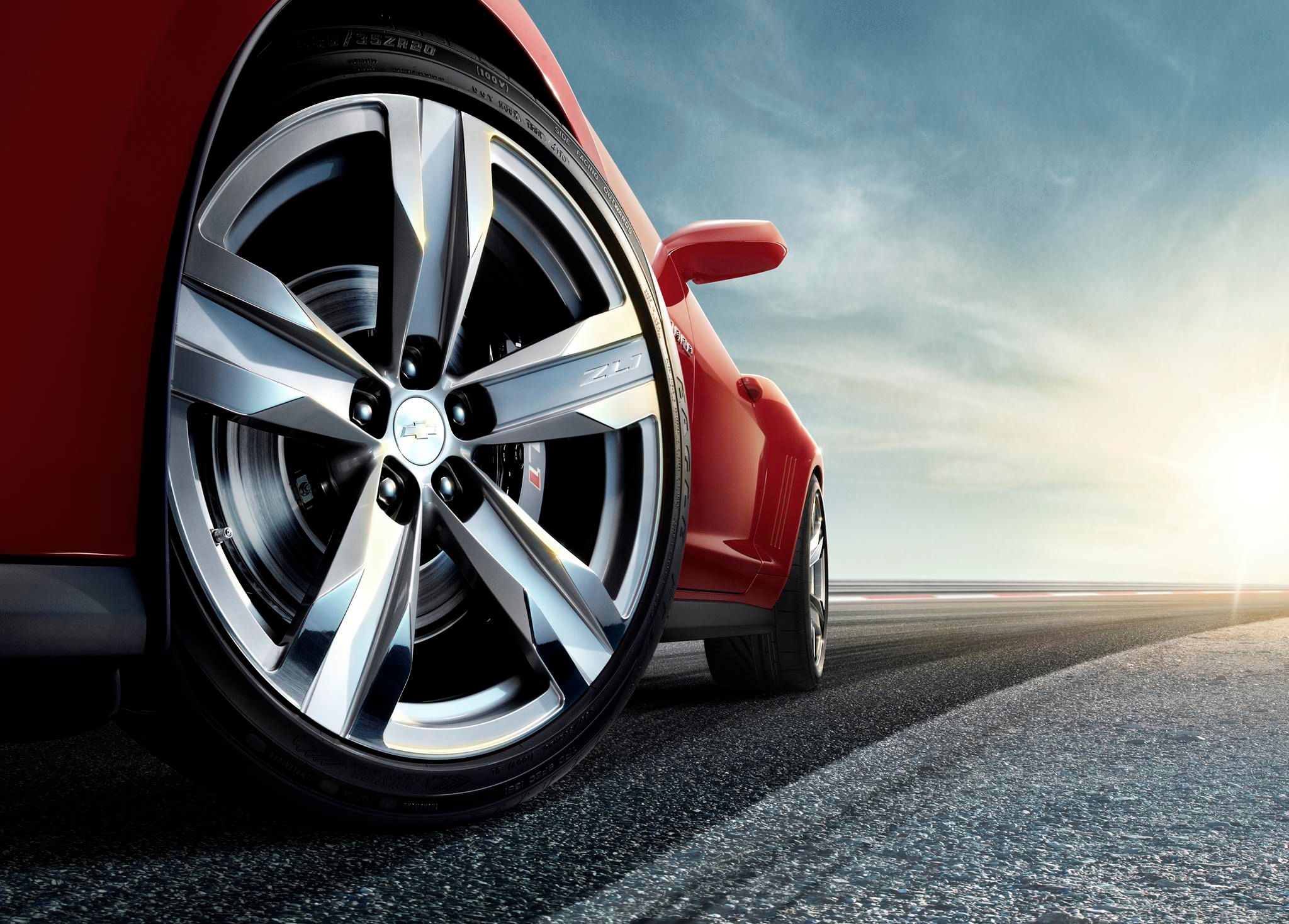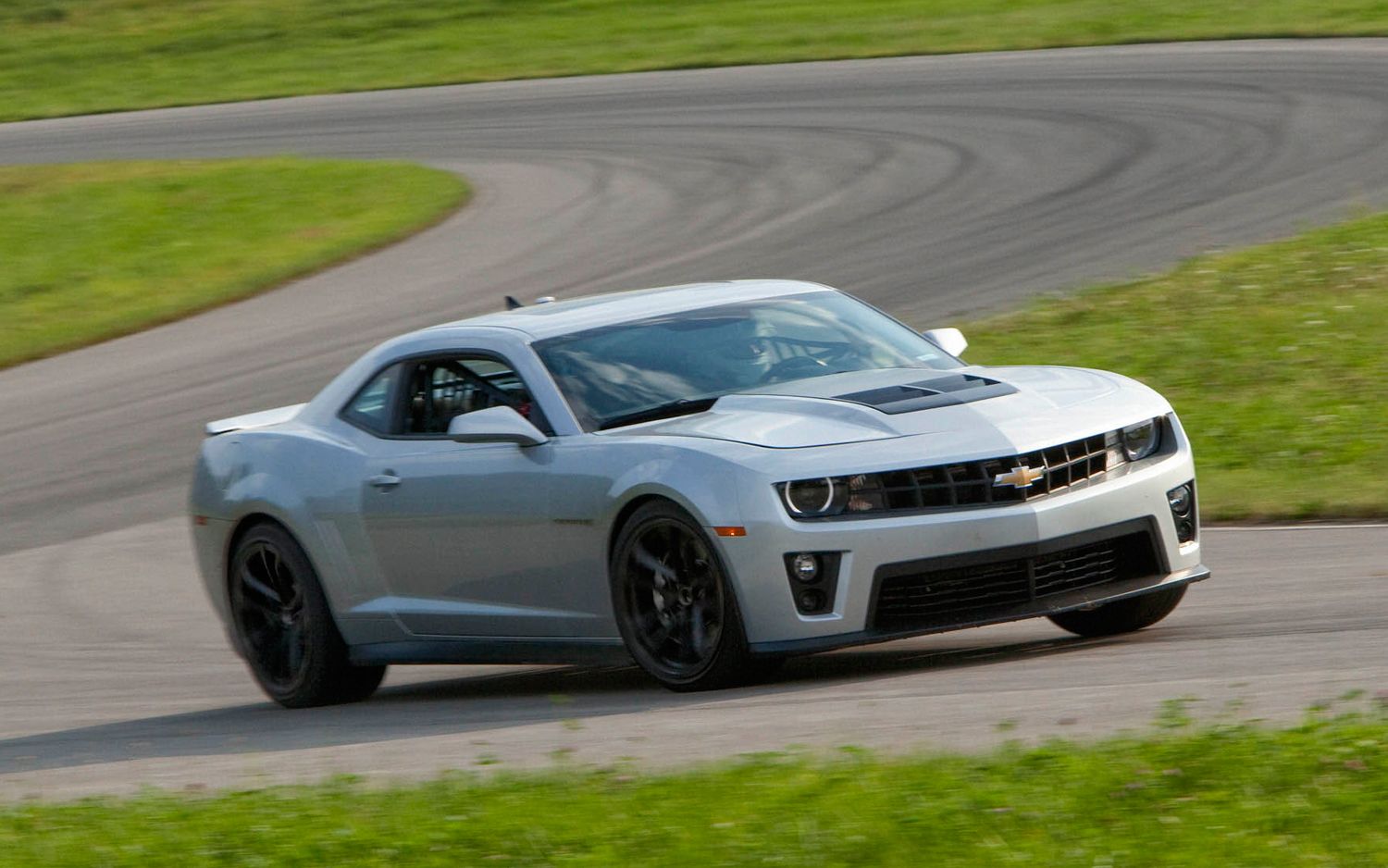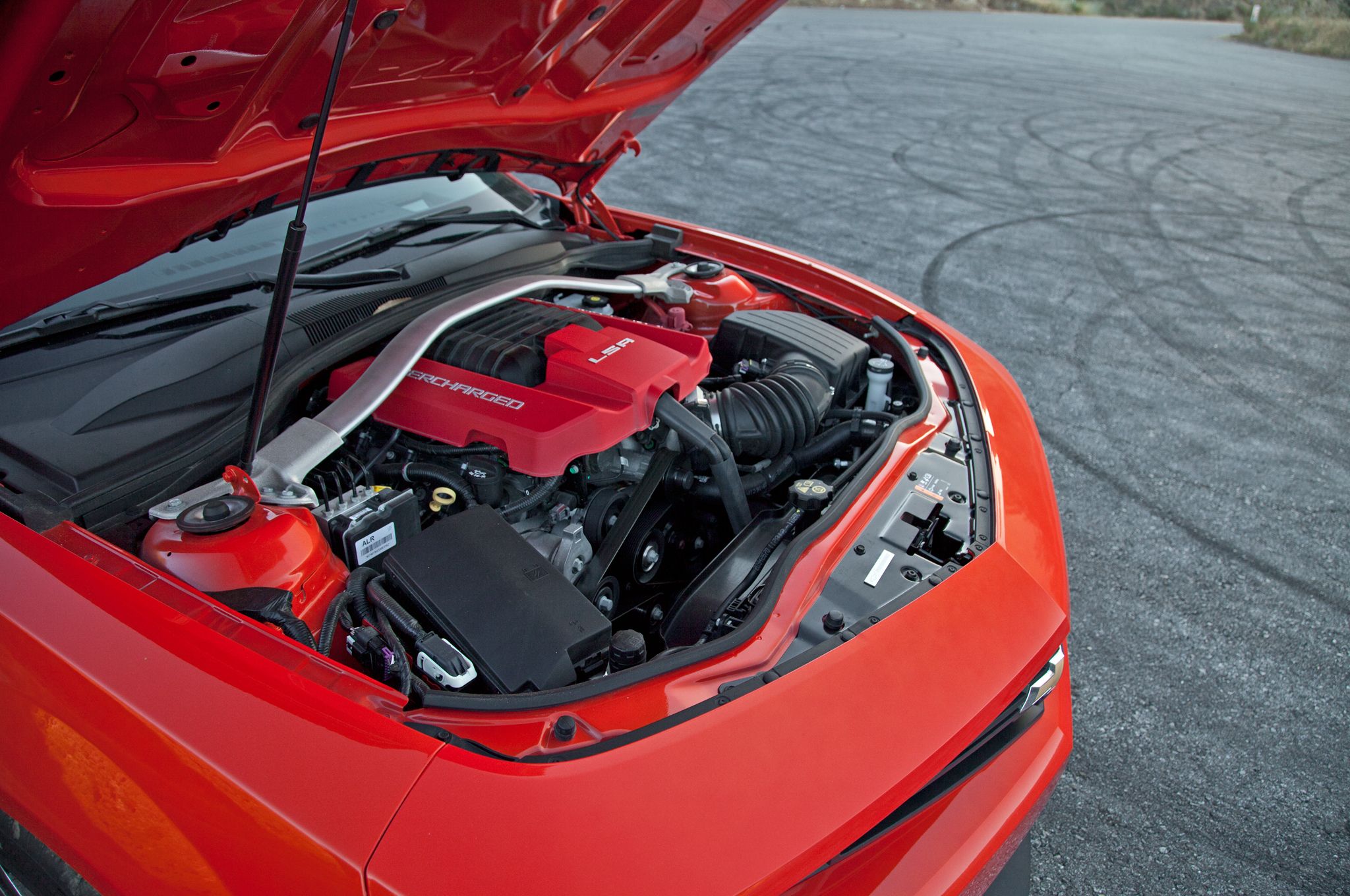Since its birth in 1967, the Chevrolet Camaro has always battled its archrival, the Ford Mustang for Pony Car supremacy. In the late 1990s and early 2000s, both the fourth generation of Camaro and its twin, the Pontiac Trans Am WS6 were annihilating the Mustang when it came to sheer performance. Ironically though, the Mustang was crushing the F-Body twins in terms of sales. So, although Pony Cars were all about muscle and performance, the bottom line for car manufacturers is about money.
So in 2002 GM decided to axe the Camaro, and the world had to wait until the end of 2009 before the Chevy would resurrect the fifth generation of Camaro. But, once it returned, it wasn't long until the GM faithful demanded more. Ford let loose the might 662-horsepower GT500 on the automotive world, and was wreaking havoc on not only Chevy owners, but arrogant BMW M3 loyalists and Subaru WRX drivers around the world. So, GM went back to work and came up with a car that was made with thirty-percent of its parts brand new or reengineered with one specific goal in mind: conquer everything in its path, whether that path was straight or twisty... and so in 2012, the ZL1 was born.
2012-2015 Chevrolet Camaro ZL1
- Supercharged LSA V8
- 51/49 Front/Rear Weight Bias
- Magnetic Ride Suspension
- Trim: ZL1
- Model: Camaro
- Engine/Motor: 6.2-Liter Supercharged V8
- Horsepower: 580-Horsepower
- Torque: 556 Pound-Feet
- Drivetrain: Rear-Wheel Drive
- Transmission: 6-Speed Manual or 6-Speed Auto
- MSRP: $56,000 Base (2012)
- 0-60 MPH In 4.1 Seconds
- Available As Manual Or Automatic
- Available In Coupe Or Convertible
- 4,000+ Pound Curb Weight
- Poor Outward Visibility
- Abysmal Fuel Economy
The Camaro ZL1 Made 580 Horsepower
While the Camaro SS was plenty powerful with its 426-horsepower LS3 V8, Ford hadn't put the brakes on trying to make the Mustang more powerful. With cars like the GT500 roaming the streets, the Blue Oval was dominating even the top Camaro... at least until 2012.
Surprising to some, the GM Performance Division didn't borrow from Camaro's big brother, the monstrously powerful Corvette Z06. Instead, engineers tapped the Cadillac CTS-V for inspiration... or rather, motivation. Power came from a supercharged and intercooled aluminum block and heads 6.2-liter V8 that produced a stupid 580-horsepower at 6,000 RPM and equally amazing 556 pound-feet of torque at 4,200 RPM, making it the second most power engine in the GM lineup, right behind the 638-horsepower LS9 supercharged V8 in the Corvette ZR1.
That power was then routed through either a traditional Tremec TR6060 six-speed manual transmission, or a Hydra-Matic 6L90 six-speed automatic transmission. From there, power got sent solely to the rear wheels, where 20-inch forged aluminum wheels shod in sticky 285/35-ZR-20 up front and 305/35ZR-20 rear Goodyear Eagle F1 SuperCar tires stood ready to try and put as much of that power to pavement as possible.
The Camaro ZL1 Comes As A Manual Or Automatic
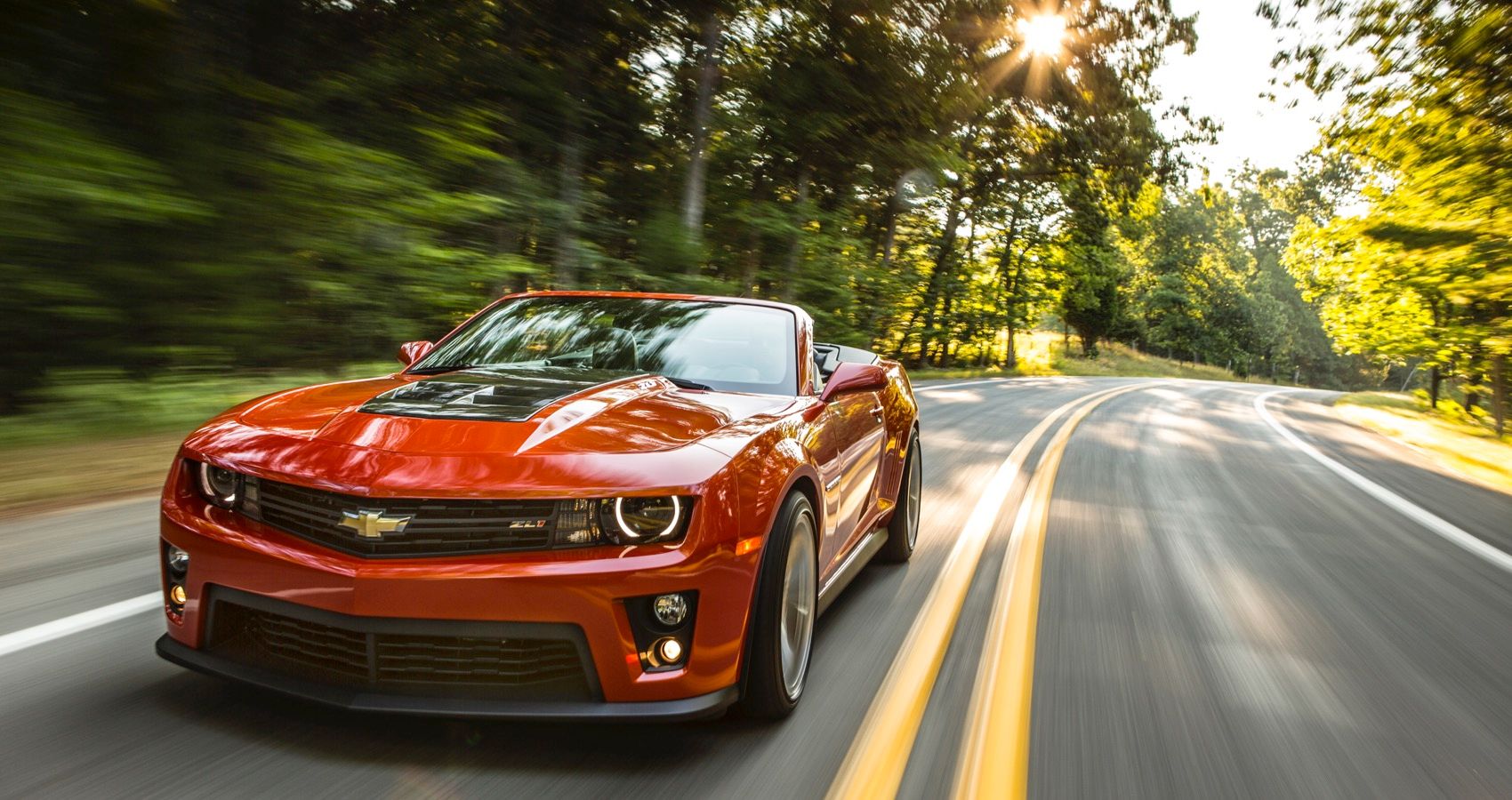
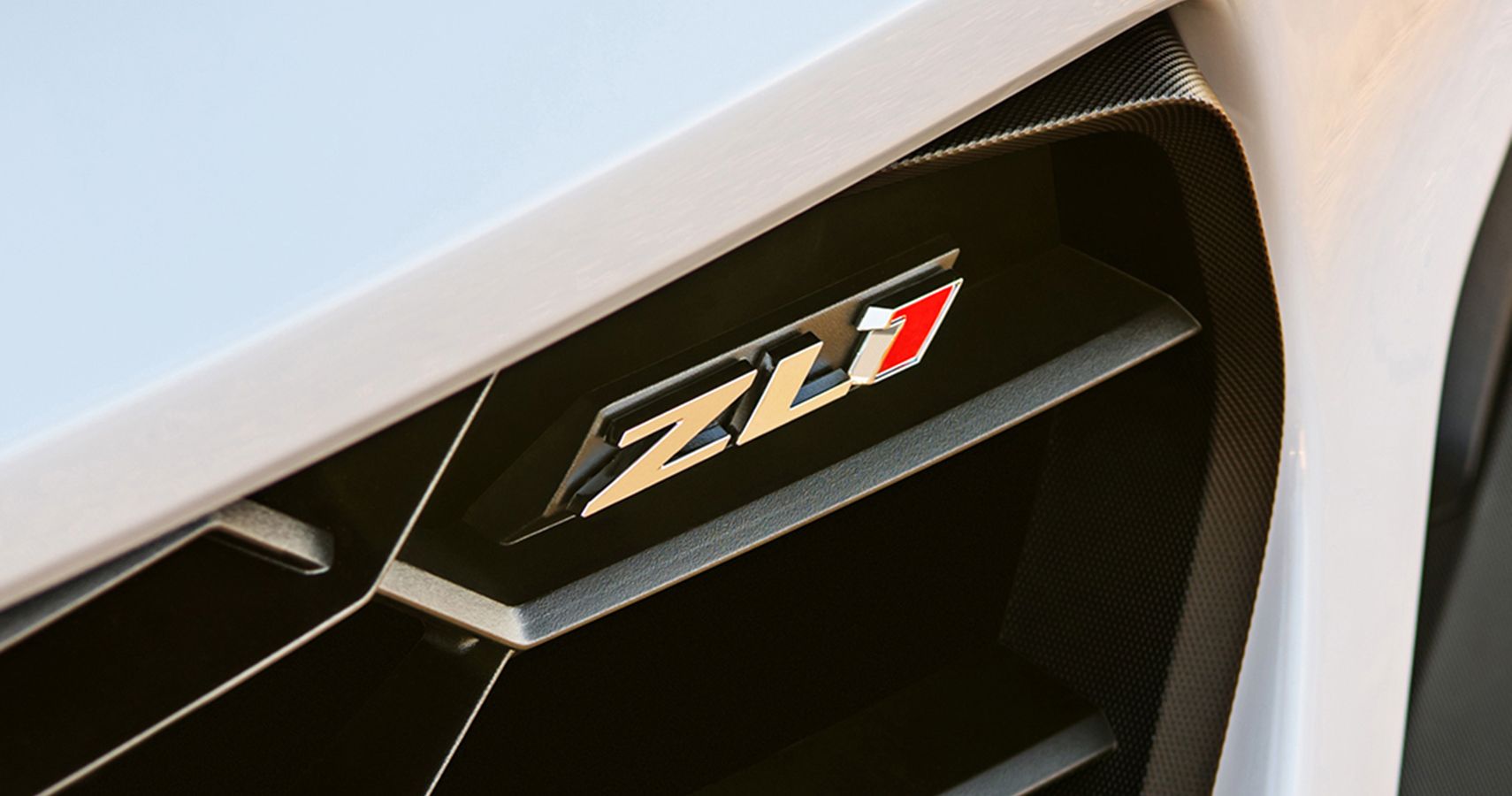
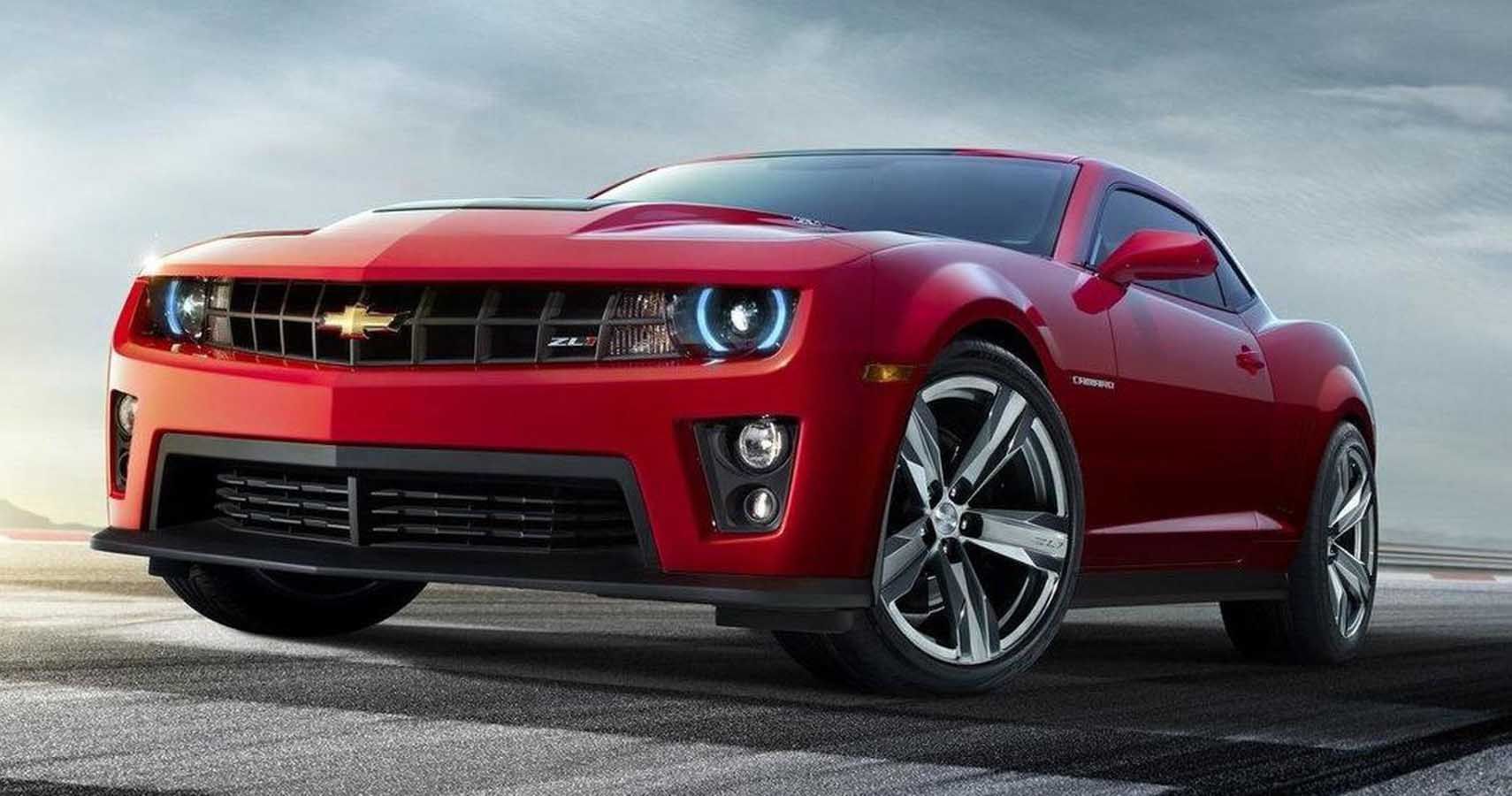
But, unlike the racy Camaros of yesteryear, GM wanted to make the ZL1 more than just a nose-heavy drag-racer like so many of the '60s and '70s special editions... not that anyone was complaining about them. But, in order to make the ZL1 competitive not just in the American market with the likes of the Dodge Viper, but also be able to hold its own with European supercars like the Audi R8 and maybe even an unsuspecting Ferrari Enzo owner here or there, the Camaro would have to be more than just a straight line runner.
So, new third-gen magnetorheological shocks got added, capable of adjusting 1,000 times per second, along with a strut-tower brace and an anti-roll bar at the rear to beef up the suspension. Two-piece rotors, and the same rotors used on the CTS-V got employed to help the ZL1 stop from 70-0 MPH in 165 feet.
Unlike the juiced-up muscle cars of the Camaro's past, or even the top-fight Z06 and ZR1 C6 Corvette models, the ZL1 became available in coupe or convertible form. Thanks to significant structural reinforcements like a front X-brace, underbody V-braces, and even a transmission support, the top-tier Camaro would not shake itself to death at speed. But, all of that extra bracing and support did come at the cost of added weight... 4,120 pounds to be exact, although it got distributed at a 51/49 front/rear bias.
The ZL1 Could Run The Quarter-Mile In 12.3-Seconds
All those fancy facts and figures are fun to hear about, but they were all meaningless if they didn't translate into something that could embarrass the Blue Oval faithful. And although the ZL1 was not made to just be a straight line performer, it was still important to show up at the drag strip. 0-60 MPH took a scant 4.1 seconds, while 0-100 MPH came and went in just 8.9 seconds. The quarter mile flashed by in a scalding fast 12.3 seconds at 119 MPH, on its way to a top speed of 184 MPH. Thanks to that well-balanced weight and independent suspension, even though the ZL1 was a bit hefty, it could still post 0.98 g of lateral acceleration around the skidpad, making it capable of keeping up with cars that cost three times as much. Of course, driving around town in a supercharged V8 did cost a bit at the pump. The ZL1 could manage only manage a best of 12/18/14 city/highway/combined MPG.
The ZL1 Posted A 7:41 Lap Around The 'Ring
As further proof that the ZL1 was more than just a drag racer, GM sent its Mustang-fighter to the Mecca of all road courses; the Nurburgring... affectionately known as The 'Ring. For context, the Lamborghini Urus posted a best lap time of 7:47, while the older, but still awesome Ferrari F50 managed 7:41, and the C5 Z06 did its best with a 7:56 time. The fifth-gen Camaro ZL1 ripped around the course with a best of 7:41. Of course, once the 650-horsepower C7 Z06 came around, it set thing right within Chevy's halls, with a best of 7:13. But then that is expected with a car that weighed 600 pounds less and made 70 more horsepower.
The one downside of the ZL1 aside from its weight has been the same thing that has plagued all the fifth-gen Camaros. Getting inside the cockpit is never an easy task, and once you are in there, it can feel claustrophobic rather quickly. Big hydroformed tube A-pillars team up with a low windshield header to limit the view out of the front, while a small rear window is almost reminiscent of the non-existent one in the timeless Lamborghini Countach.
Aside from its somewhat limited outward visibility, the Camaro ZL1 was a remarkably comfortable car to drive on a daily basis, if one so desired it to be. General Motors graced the ZL1 with a Performance Traction Management system as standard equipment. That system, formally only available on the mega-fast Corvette ZR1, allowed the ZL1 to utilize not only its aforementioned magnetic ride control system, which at 60 MPH was capable of adjusting every inch of road the Camaro traveled on, also included traction control, electronic stability control, and the all-important launch control to Ford-fight at every stop light possible (at legal speeds of course).
A Used ZL1 Will Cost You Roughly $45,000
Although it was only available for three model years from 2012-2015, the Camaro ZL1 made a tremendous mark on the automotive performance community. According to Classic.com you can now find a used fifth-generation Camaro ZL1 for an average resale price of $45,031, with its highest resale price being $77,000 and its lowest resale price being just $30,250.
Although we had to wait a full decade after GM halted production of the Camaro in 2002 before we got to see the ZL1, Chevy more than made up for lost time with a car that could hang in any race with almost any supercar the world had to offer.

